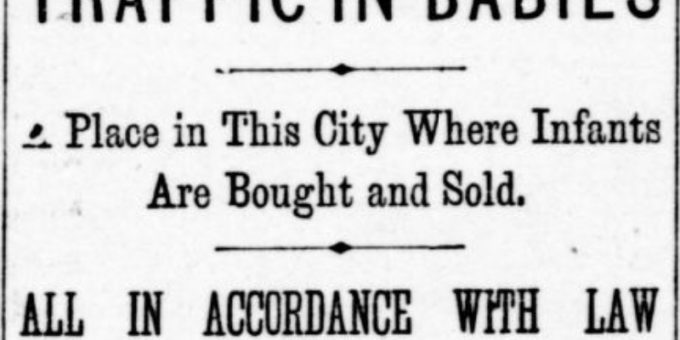
You may be wondering what baby farms were.
According to numerous definitions found online, a baby farm was a place that accepted babies and young children for payment. Unwed mothers paid people to care for their babies and to adopt out unwanted little ones.
At the farms, the babies were often neglected until death or they were sold off. Sometimes young mothers were able to visit their babies when they weren’t busy working 16 hour shifts in the factories. And the women from wealthy families would hand over their infants to the care of baby farms to prevent possible suitors from discovering the illegitimate child.
Most women who entered into the baby farm trade would charge anywhere from $3 to $7 a week to care for the child. And by care, I mean a roof over the child’s head until it died of disease and neglect.
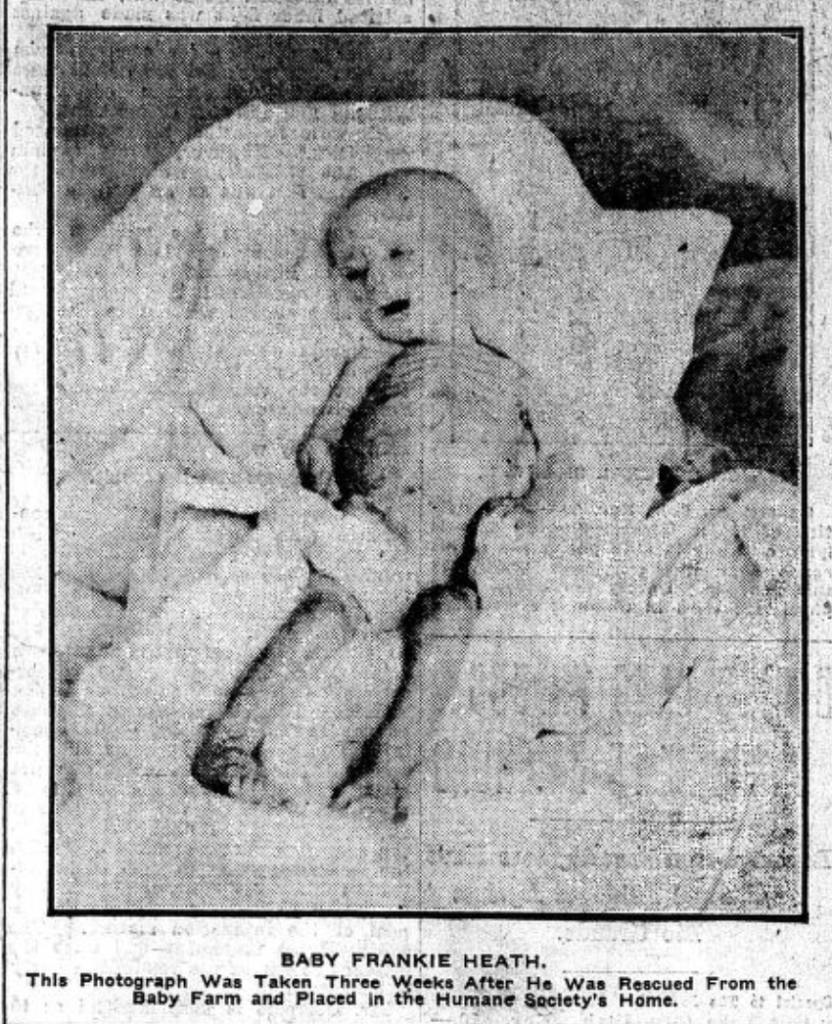
One underground reporter noted in 1912 that these farms were located in poverty districts and the children were housed together in one room.
One woman kept eight scrawny babies on a bed in her attic where they received no attention, and very little food. Upon further inspection, the reporter discovered more small children in other parts of the woman’s house. All were malnourished and dirty.
When the reporter visited a second baby farm, he described:
“On the floor in the kitchen lay four babies kicking first one pink sock in the air and then a white one. I noticed that the stockings of most of the babies were not mates. On the kitchen table stood three clothes baskets, and in each was an infant wailing piteously. In the corners, on chairs, beside the kitchen range, hanging like cocoons, everywhere were baskets with babies sleeping on pillows turned brown from uncleanliness.
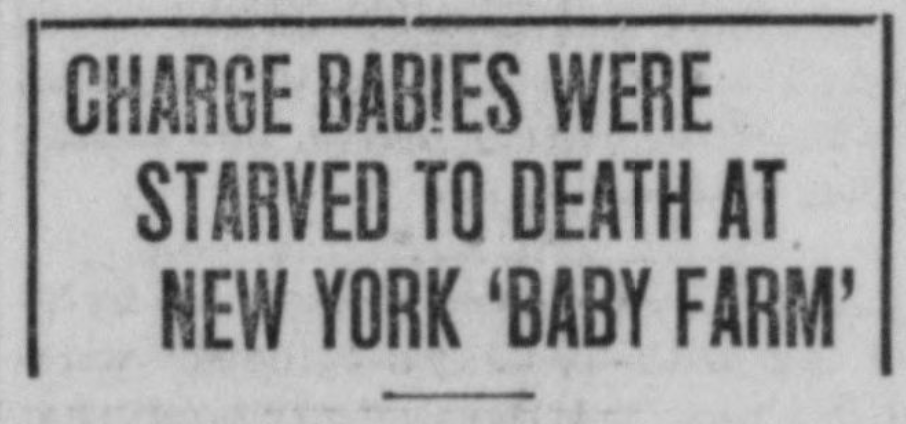
“There were nine in the kitchen alone. In the next room were more frail babies, howling from their go carts, cribs, and baskets. And in the front room more babies cried. An infant covered by a mosquito bar lay apart. She had sore eyes..”
The reporter later spoke to a 17 year old mother who housed her infant at a baby farm. She said:
”One time when I came to visit him (her son) I found him drinking raw milk that had not been boiled. Another time when I came unexpectedly to see my baby I found a strange baby wearing my baby’s clothes.
“The superintendent of the baby farm is cruel to the older children. She’s too strict, doesn’t allow them to play in the yard, and makes them sit in a chair all day when she is around. She sends them off to school without breakfast, and they have only bread and molasses for lunch. One morning I had a spare hour before I had to be at the factory. I ran down to see my baby. I did not see the older children eating breakfast. I asked Mary, the oldest child, if she had had her breakfast. She answered that none of the children had.

“As a punishment, the superintendent of the baby farm makes the children stand in a corner for hours when they are naughty, She has a dark closet for the mischievous ones. She pours castor oil and other lubricants down the throats of youngsters who tell falsehoods or washes their mouths out with strong soap to keep them from telling stories. They must play in a subdued way in the kitchen, if they play at all.”
This was a far better treatment than what the babies at a Des Moines baby farm endured. As it was reported in 1907, babies were burned at the Des Moines farm and were thrown into the furnace to end their screams. While this house sold many babies, those they could not sell were sometimes given away to the inmates at the disorderly houses. Little girls were popular with the inmates.
What became of these babies was not reported.
Source:
Dewey County advocate. (Timber Lake, S.D.), 23 Aug. 1912.
Evening times-Republican. (Marshalltown, Iowa), 05 June 1907.
1. Mrs. Eloise Kennedy
In 1914, a number of reports came out about baby farms across the United States. Two popular ones were in Chicago.
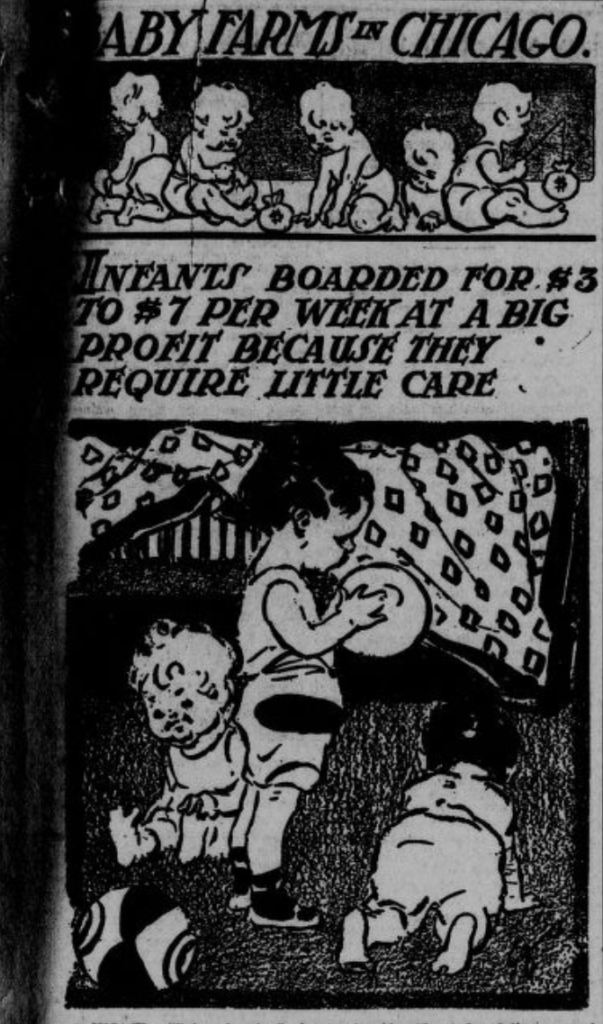
One baby farm was uncovered and exposed by amateur detective, Kate Clip.
When the police raided the home, they found a total of 15 babies.
One of those babies was suffering from diphtheria.
In a court hearing, testimony was given that Mrs. Kennedy:
“Once used a slipper to spank a child, causing black and blue streaks to arise on the body. She also performed an operation on one child with a pair of shears.”
Mothers of those babies who died in Mrs. Kennedy’s care were charged anywhere from $15 to $45 for the burial.
However, police were baffled as to what happened to all the baby bodies.
Kennedy’s supposedly private undertaker admitted that he only buried three baby bodies in potter’s field.

At trial, a reverend testified that:
“Children were offered for sale at prices ranging from $20 to $40.”
However another report stated that the babies were sold from $25 to $75.
While Kennedy had been arrested, it was reported in October of that same year that she was discharged after a jury failed to reach a verdict.
Sources:
The day book. (Chicago, Ill.), 25 June 1914.
The day book. (Chicago, Ill.), 27 June 1914.
The day book. (Chicago, Ill.), 15 June 1914.
The day book. (Chicago, Ill.), 23 Oct. 1914.
2. Anna (Annie) Mills & Dr. Balhatchett
The other Chicago baby farm uncovered in 1914 was run by housekeeper Anna or Annie Mills and Dr. Balhatchett.
Rumors had drifted through the city streets that they were running a baby mill and the house was raided by police.
Inside they found the corpse of a 1-yo boy, a living 18 month old girl, and a drying toddler of 16 months.

Anna Mills was arrested and at first she would not talk.
But then she finally gave up the name of Dr. Balhatchett.
As the investigation went on, two mothers of the children were located and were charged with child abandonment.
One of these mothers, a Miss Mortell, testified that she paid Anna Mills $150 to care for her child.
When asked about the father, Miss Mortell told the court that she had been drugged by a teamster and raped. She had not seen the man since the incident.
Another mother who was not charged with child abandonment, testified that Dr. Balhatchett took her baby from her after she gave birth to it.
The Dr. put the baby in a shoebox and took it upstairs.
He gave the baby in the shoebox to Anna Mills and told her to put it somewhere until morning when the baby would be dead.
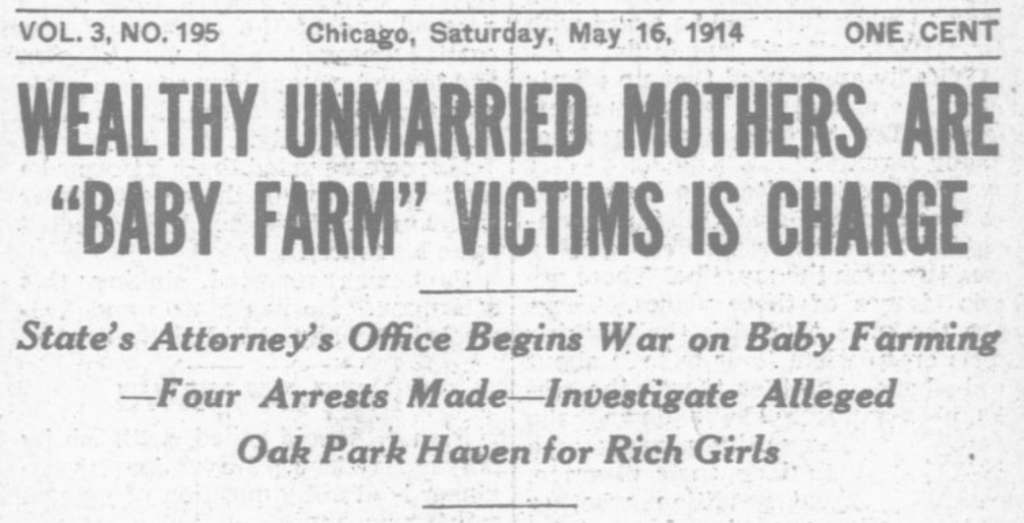
In all these cases, the women admitted that the doctor had made it his job to help wealthy young mothers cover up their “mistakes.”
For example, one mother was found to have married a wealthy merchant after giving up her baby and paying the farm $300 to care for the child.
The state attorney’s office said they were going to go after the higher ups in the baby farm cases that were being discovered in Chicago. Mostly, they wanted to uncover the identities of the doctors who were profiting from the babies.
It was said,
“There are two classes of these places. There are the ones to which the working girls creep when their babe is about to be born. And then there’s the other places which shake down the daughters of wealthy parents who go there to hide their disgrace. Anyone in that condition, whether she is rich or poor, is a harvest for those sorts of doctors.”
Of course, Dr. Balhatchette was freed on charges and we see him again in the papers a year later being called to an inquest for treating women who died after receiving abortions.
Sources:
The day book. (Chicago, Ill.), 15 May 1914.
The day book. (Chicago, Ill.), 29 May 1914.
The day book. (Chicago, Ill.), 16 May 1914.
The day book. (Chicago, Ill.), 18 May 1914.
The day book. (Chicago, Ill.), 05 Aug. 1915.
3. Sam Goldstein
If you are looking for some sort of happy ending to any of these baby farm stories, good luck. The story of Sam Goldstein is the best I could find.
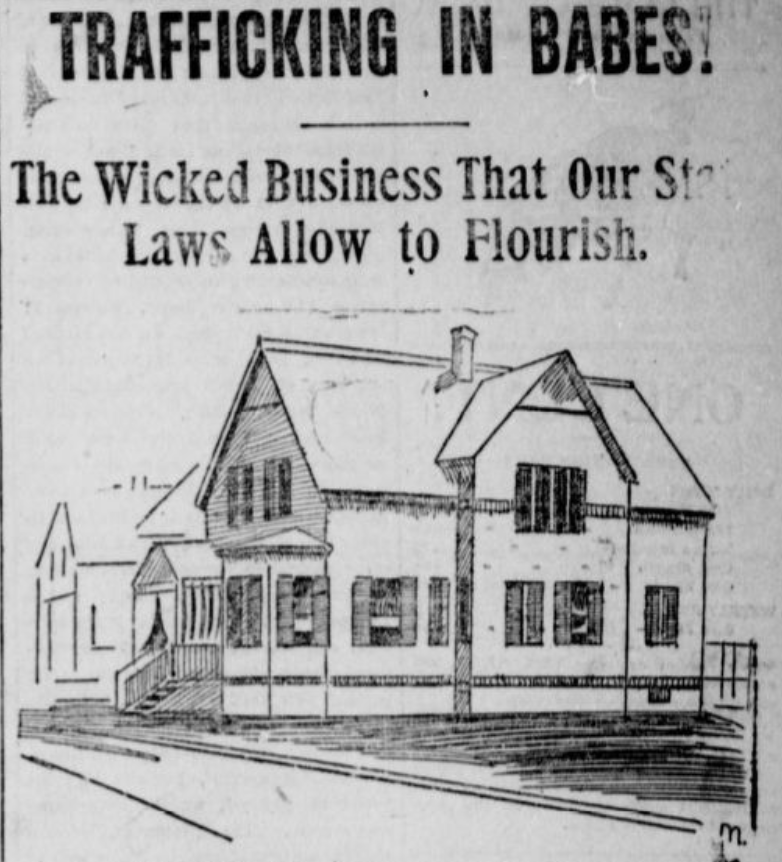
Sammy was taken to a baby farm in Brooklyn, NY when he was a mere five days old.
His single mother, who earned $18 a month as a servant, paid the baby farm $12 each month for his care.
For 5 years he was kept in a little room and fed only bread and water.
Then in the summer of 1914, the little boy was rescued from his prison by the Society for the Prevention of Cruelty to Children.
On the day of his rescue, Sammy had his very first bath, his first street car ride, and his first sight of crowds of people on the streets.
One of the officials said, “He is virtually a savage. But we are going to make a normal boy of him, with a little time and a whole lot of patience.”
Source:
The times dispatch. (Richmond, Va.), 19 July 1914.
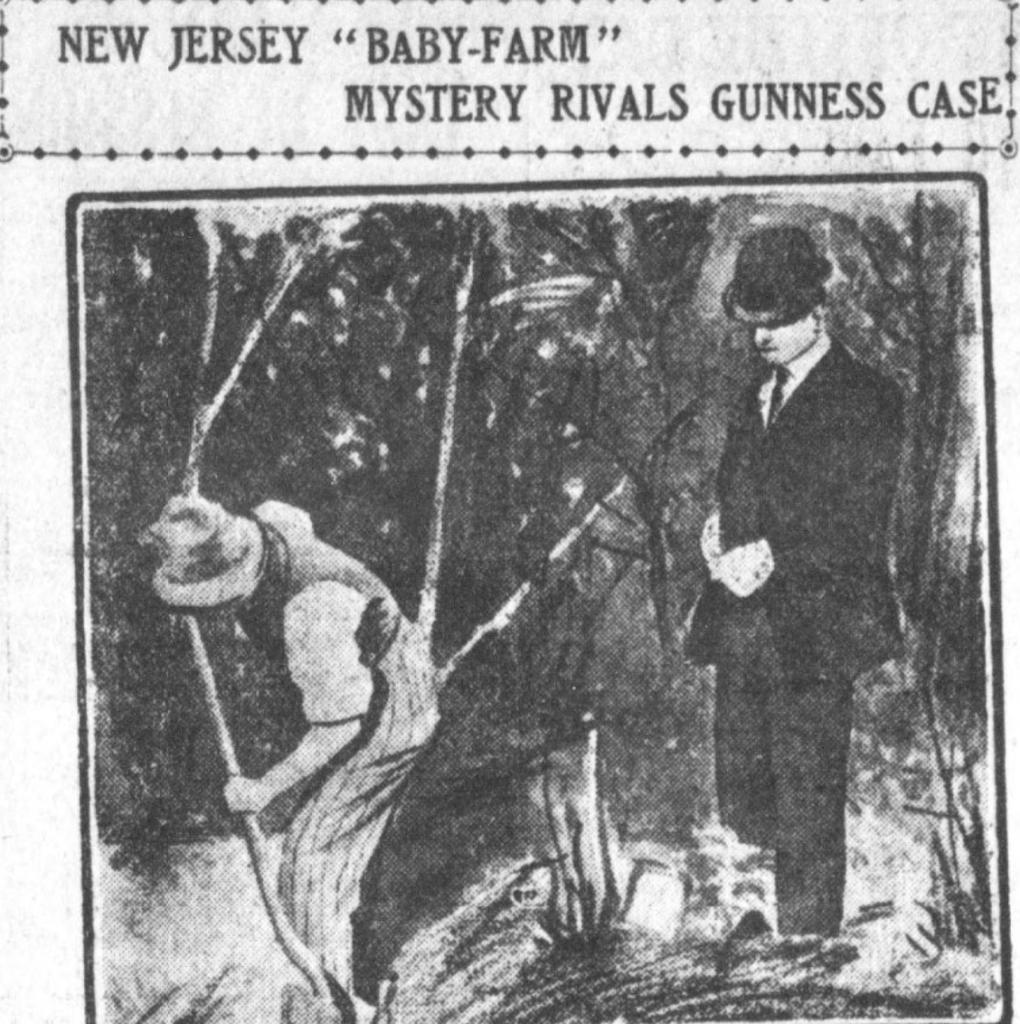
Of course, this is just the tip of the iceberg when it comes to baby farms in the United States. Most of the time, those who were involved in running these hellholes were not charged for the neglect and deaths of the infants, toddlers, and children. And if they were charged, those charges were often quietly dropped.


And people talk about the “good ol’ days”? Notice one of the babies had diphtheria…a disease virtually wiped out (fewer than 2 death per year since 1990) in the United States since 1990…thanks to the diphtheria VACCINE given to babies, children, teens and adults as part of the DTaP and Tdap VACCINES. When, oh when will millions of Americans stop getting their medical information from Fox News, ONE, lunatic righr radio personalities, and the 100% trustworthy Internet, and Facebook? Is there no vaccine for STUPID?!
I feel and deeply understand your frustration with how things are right now. If there were a vaccine for stupid, I’d be first in line for it – better to be safe!